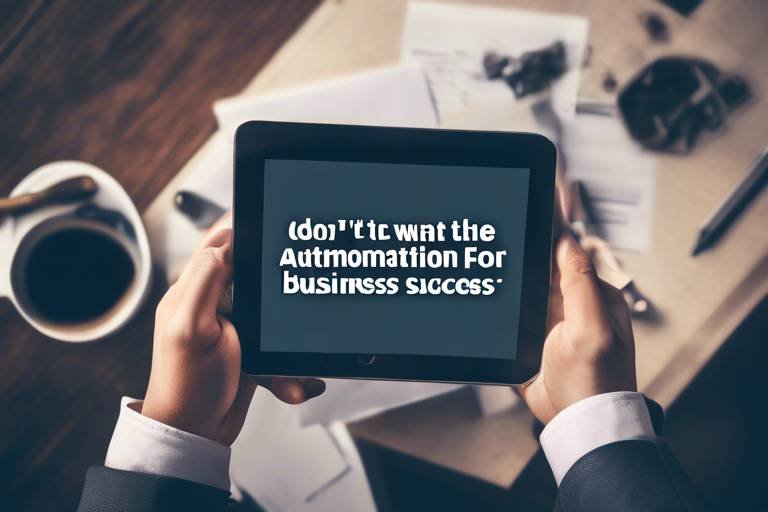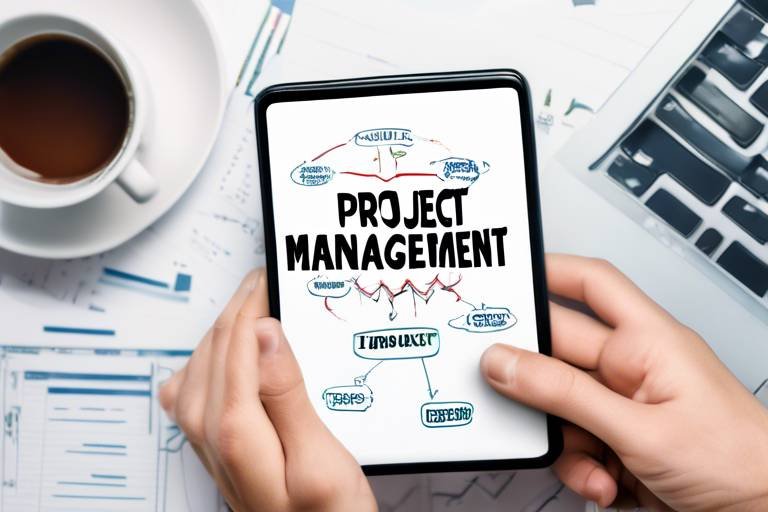The Impact of Office Design on Employee Motivation
Office design plays a crucial role in shaping the motivation levels of employees. The physical workspace is not just a backdrop but a dynamic environment that can either inspire or hinder productivity, creativity, and overall well-being. Imagine walking into an office that is dull, cramped, and poorly lit versus stepping into a space filled with natural light, vibrant colors, and comfortable furniture. The difference in the atmosphere is palpable, affecting how employees feel and perform in their roles.
When employees are surrounded by a thoughtfully designed office layout that encourages interaction, communication, and a sense of belonging, it can significantly boost their motivation and job satisfaction. An open layout with collaborative spaces facilitates teamwork, idea sharing, and a stronger sense of community among colleagues. This sense of connection and camaraderie can ignite a passion for work and drive individuals to excel in their tasks.
Lighting and color schemes are not merely aesthetic choices but powerful tools that can influence mood, energy levels, and focus. Natural light has been proven to enhance well-being and productivity, while carefully selected color palettes can evoke specific emotions and create a conducive work environment. By optimizing lighting and color schemes, employers can create a space that energizes employees and keeps them engaged throughout the day.
Providing ergonomic furniture and workstations is essential for supporting the physical health and comfort of employees. When individuals are free from discomfort and strain, they can focus better on their tasks and maintain high levels of motivation. Adjustable chairs, standing desks, and other ergonomic solutions contribute to a healthier and more productive workforce, ultimately driving employee satisfaction and retention.
Integrating elements of nature into the office environment, known as biophilic design, has been shown to have numerous benefits for employee motivation. Plants, greenery, and natural materials can reduce stress, improve air quality, and stimulate creativity. By bringing the outdoors inside, employers can create a refreshing and inspiring workspace that rejuvenates employees and enhances their overall well-being.
Technology and digital tools play a vital role in modern office design, enabling streamlined processes, efficient communication, and increased collaboration. By providing employees with the right tools and resources, organizations empower their workforce to work more effectively and stay motivated. From project management software to video conferencing tools, technology can transform the way employees engage with their work and colleagues.
Personalization and flexibility are key factors in creating a motivating work environment. Allowing employees to personalize their workspace according to their preferences and offering flexible work arrangements can boost autonomy, creativity, and a sense of ownership. When individuals feel empowered to make their space their own and manage their time effectively, they are more likely to be motivated and engaged in their roles.
Designating quiet zones for focused work and collaboration areas for teamwork strikes a balance that caters to different work styles and preferences. Employees have varying needs when it comes to concentration and collaboration, and providing dedicated spaces for each ensures that individuals can work in a manner that suits them best. By offering a mix of quiet and collaborative areas, employers support diverse work styles and enhance overall motivation.
Soliciting feedback from employees on office design and implementing changes based on their suggestions is crucial for maintaining high levels of motivation. By actively involving employees in the design process and showing that their opinions are valued, organizations create a sense of ownership and investment in the workspace. Continuous improvement based on feedback ensures that the office environment evolves in line with changing needs and expectations, keeping motivation levels high and employees engaged.

Importance of Office Layout
Exploring how the physical workspace influences employee motivation, productivity, and well-being, and the importance of creating a conducive environment that fosters engagement and satisfaction.
The layout of an office plays a crucial role in shaping the work environment and employee experience. A well-thought-out office layout can promote collaboration, communication, and a sense of community among employees. By creating open spaces, shared areas, and designated zones for different activities, the office layout can foster interaction and teamwork, leading to increased motivation and job satisfaction.

Lighting and Color Schemes
Exploring how the physical workspace influences employee motivation, productivity, and well-being, and the importance of creating a conducive environment that fosters engagement and satisfaction.
When it comes to office design, lighting and color schemes play a crucial role in shaping the atmosphere and influencing employee motivation. Natural light is like a breath of fresh air, boosting energy levels and mood. On the other hand, strategic use of artificial lighting can create a dynamic and vibrant workspace. Imagine walking into a room bathed in warm, inviting light that instantly lifts your spirits and sparks your creativity. Such an environment can have a profound impact on employee motivation and overall performance.
Similarly, color choices can significantly affect the ambiance of the office. Bright, stimulating colors like yellow and orange can evoke feelings of positivity and enthusiasm, while calming hues such as blue and green promote relaxation and focus. By carefully selecting color schemes that align with the company's culture and goals, employers can create a visually stimulating environment that enhances employee motivation and well-being.
Moreover, incorporating elements of nature into the office design can further amplify the positive effects of lighting and color. Imagine lush green plants scattered throughout the workspace, creating a sense of tranquility and connection to the outdoors. By integrating biophilic design elements, such as nature-inspired color palettes and materials, employers can cultivate a harmonious environment that boosts creativity, reduces stress, and elevates employee motivation.

Ergonomic Furniture and Workstations
Exploring how the physical workspace influences employee motivation, productivity, and well-being, and the importance of creating a conducive environment that fosters engagement and satisfaction.
The layout plays a crucial role in promoting collaboration, communication, and a sense of community among employees. By facilitating interaction and teamwork, a well-designed office layout can lead to increased motivation and job satisfaction.
Lighting and color choices have a significant impact on mood, energy levels, and focus within the workspace. Natural light and carefully selected color schemes can positively influence employee motivation and overall performance, creating a vibrant and inspiring atmosphere.
The significance of providing ergonomic furniture and workstations cannot be overstated. By offering comfortable, adjustable furniture that supports physical health and reduces discomfort, employers can enhance productivity and motivation. Ergonomically designed workstations contribute to a positive work environment that prioritizes employee well-being.
Incorporating nature elements such as plants, greenery, and natural materials into the office environment can have profound effects on employee motivation. Biophilic design reduces stress, enhances creativity, and boosts overall well-being, creating a harmonious and inspiring workspace.
Technology and digital tools play a vital role in streamlining processes, improving communication, and empowering employees. By leveraging technology effectively, organizations can create a more efficient and motivating work environment that enhances collaboration and innovation.
Offering employees the opportunity to personalize their workspace and providing flexible work arrangements are key factors in driving motivation and engagement. Allowing individuals to tailor their environment to their preferences fosters a sense of ownership and autonomy, leading to increased creativity and job satisfaction.
Designating specific areas for focused work and quiet reflection, as well as creating collaborative spaces for teamwork and idea exchange, caters to different work styles and enhances motivation. By providing a variety of work environments, organizations can support diverse needs and boost employee productivity.
Gathering feedback from employees on office design is essential for continuous improvement. By implementing changes based on suggestions and evolving needs, organizations can maintain high levels of motivation and ensure that the workspace remains conducive to employee well-being and productivity.

Integration of Nature Elements
Exploring how the physical workspace influences employee motivation, productivity, and well-being, and the importance of creating a conducive environment that fosters engagement and satisfaction.
The integration of nature elements in office design has shown remarkable benefits in enhancing employee motivation and overall well-being. By incorporating biophilic design elements such as plants, greenery, and natural materials, workplaces can create a more harmonious and inspiring environment. Studies have demonstrated that exposure to nature elements indoors can significantly reduce stress levels, boost creativity, and increase productivity.
Imagine stepping into an office space filled with lush green plants and natural light streaming in through large windows. The presence of nature elements not only adds aesthetic appeal but also has a profound impact on employee motivation. It creates a connection to the outdoors, offering a sense of tranquility and rejuvenation amidst the hustle and bustle of daily work life.
Furthermore, the use of natural materials like wood and stone in office design can evoke a sense of grounding and authenticity, fostering a more calming and inviting atmosphere. Employees surrounded by nature elements tend to experience higher levels of job satisfaction and a greater sense of well-being, leading to increased motivation and engagement in their work.
Research has also shown that exposure to nature elements can improve cognitive function and concentration, helping employees stay focused and energized throughout the day. By bringing the outdoors inside, workplaces can create a dynamic and stimulating environment that nurtures creativity and innovation.
Incorporating nature elements into office design is not just a trend but a strategic approach to enhancing employee motivation and overall performance. By embracing biophilic design principles, organizations can create a workplace that supports the physical, mental, and emotional well-being of their employees, ultimately leading to a more vibrant and productive work environment.

Technology and Digital Tools
Technology and digital tools play a crucial role in shaping the modern workplace and influencing employee motivation. By leveraging innovative technologies, organizations can streamline processes, enhance communication, and empower their workforce to perform at their best. From project management software to collaboration platforms, these tools are designed to create a more efficient and motivating work environment.
One key aspect of technology in the office is the use of digital communication tools. Platforms like Slack, Microsoft Teams, or Zoom enable real-time collaboration, instant messaging, and virtual meetings, breaking down communication barriers and fostering teamwork. By facilitating quick and seamless interactions, these tools contribute to a more connected and motivated workforce.
Moreover, automation tools and software solutions can help employees automate repetitive tasks, allowing them to focus on more strategic and creative aspects of their work. By reducing manual workload and increasing efficiency, technology enables employees to achieve more in less time, boosting productivity and motivation.
Another important aspect is the integration of virtual reality (VR) and augmented reality (AR) technologies in training and development programs. These immersive technologies provide engaging learning experiences, enhance skill development, and increase employee engagement. By offering interactive and personalized training sessions, organizations can nurture talent and motivate employees to continuously improve.
Furthermore, the implementation of data analytics tools allows companies to track performance metrics, gather insights, and make data-driven decisions. By analyzing key performance indicators (KPIs) and employee feedback, organizations can identify areas for improvement, optimize processes, and create a conducive work environment that supports motivation and success.

Personalization and Flexibility
Personalization and flexibility in the office environment play a crucial role in boosting employee motivation and engagement. Allowing employees to personalize their workspace according to their preferences can create a sense of ownership and belonging. It gives them the freedom to tailor their surroundings to suit their needs and preferences, which can significantly impact their mood and productivity. Imagine coming to work every day to a space that reflects your personality and style, how much more motivated and inspired would you feel?
Moreover, offering flexible work arrangements, such as remote work options or flexible hours, empowers employees to manage their time effectively and achieve a better work-life balance. This flexibility acknowledges that employees have different working styles and responsibilities outside of work, allowing them to work in a way that suits them best. It promotes autonomy and trust, leading to higher job satisfaction and motivation. When employees feel trusted and valued, they are more likely to be motivated to perform at their best.
Creating a balance between personalization and flexibility can create a dynamic and inclusive work environment where employees feel respected and supported. It encourages creativity, innovation, and a sense of community among colleagues. By embracing individuality and offering flexibility, organizations can cultivate a culture of motivation and empowerment that drives performance and success.

Quiet Zones and Collaboration Areas
Exploring how the physical workspace influences employee motivation, productivity, and well-being, and the importance of creating a conducive environment that fosters engagement and satisfaction.
When it comes to office design, striking the right balance between quiet zones and collaboration areas is crucial. Quiet zones provide employees with dedicated spaces for focused work and introspection. These areas are designed to minimize distractions, allowing individuals to concentrate deeply on tasks that require intense focus and attention. On the other hand, collaboration areas are designated spaces where employees can come together to brainstorm, exchange ideas, and work collectively on projects.
Incorporating quiet zones into the office layout acknowledges the varying work styles and preferences of employees. Some individuals thrive in a serene environment where they can work without interruptions, while others may benefit from the energy and creativity that collaboration areas offer. By providing both types of spaces, employers cater to the diverse needs of their workforce, promoting a harmonious balance between solitary work and group collaboration.
Quiet zones are akin to havens of tranquility in the bustling office environment, offering respite from the constant hum of activity. These areas are designed to encourage deep thinking, problem-solving, and reflection, allowing employees to recharge their mental batteries and approach tasks with renewed clarity and focus. Collaboration areas, on the other hand, serve as hubs of innovation and teamwork, fostering creativity, idea generation, and cross-functional collaboration.
Implementing a well-defined layout that includes designated quiet zones and collaboration areas can significantly impact employee motivation and productivity. Employees have the flexibility to choose the environment that best suits their work requirements at any given time, enhancing their overall job satisfaction and engagement. By creating a workspace that accommodates both individual focus and team interaction, organizations empower their employees to perform at their best while fostering a sense of community and collaboration.
Q: How can office design influence employee motivation?
A: Office design plays a crucial role in shaping the work environment and can impact factors such as productivity, job satisfaction, and overall well-being. By creating a workspace that is conducive to collaboration, creativity, and comfort, employers can enhance employee motivation and engagement.
Q: What are some key elements to consider when designing quiet zones and collaboration areas?
A: When designing quiet zones, factors such as sound insulation, comfortable seating, and adequate lighting should be prioritized to create a peaceful and productive environment. Collaboration areas should be equipped with versatile furniture, interactive tools, and inspiring decor to facilitate teamwork and idea exchange.
Q: How can employers gather feedback on office design from employees?
A: Employers can conduct surveys, focus groups, or one-on-one interviews to collect feedback from employees regarding the office layout, furniture, amenities, and overall work environment. Regular communication and open dialogue can help identify areas for improvement and ensure that the workspace meets the needs and preferences of the workforce.

Feedback and Continuous Improvement
Feedback is a crucial component in the journey towards creating an ideal workspace that maximizes employee motivation and satisfaction. By actively seeking input from employees about the office design, organizations can gain valuable insights into what works well and what can be improved. This feedback loop not only demonstrates that the company values the opinions of its employees but also allows for continuous improvement based on real experiences and preferences.
Implementing a system for collecting feedback, whether through surveys, suggestion boxes, or regular meetings, creates a channel for open communication and transparency. Employees feel empowered when their voices are heard and their suggestions are taken into consideration. This collaborative approach fosters a sense of ownership and engagement, leading to a more motivated workforce.
Moreover, continuous improvement is essential to adapt to changing needs and trends in the workplace. As technology advances and work practices evolve, the office environment must also evolve to support the well-being and productivity of employees. By embracing a culture of continuous improvement, organizations can stay agile and responsive, ensuring that the workspace remains a source of inspiration and motivation.
Frequently Asked Questions
- How does office layout impact employee motivation?
The office layout plays a crucial role in promoting collaboration, communication, and a sense of community among employees. This fosters increased motivation, job satisfaction, and overall productivity.
- What is the significance of lighting and color schemes in the workplace?
Lighting and color choices can greatly affect mood, energy levels, and focus of employees. By creating a well-lit and harmonious environment, motivation and performance can be positively influenced.
- Why is ergonomic furniture important for employee motivation?
Ergonomic furniture and workstations are essential for supporting physical health, reducing discomfort, and enhancing productivity. Comfortable work setups contribute to higher levels of motivation and engagement.
- How does the integration of nature elements impact motivation?
Incorporating nature elements such as plants and natural materials can reduce stress, boost creativity, and elevate employee motivation. Connecting with nature in the workspace enhances well-being and performance.
- What role does technology play in enhancing motivation at work?
Technology and digital tools streamline processes, improve communication, and empower employees, creating a more efficient and motivating work environment. Utilizing tech solutions can drive motivation and engagement.



















